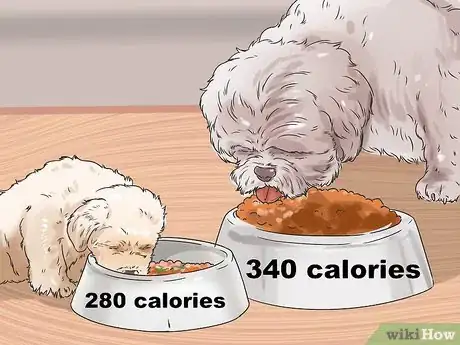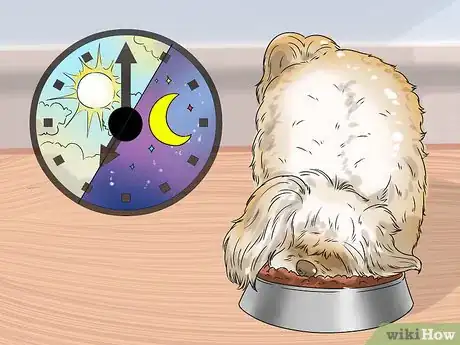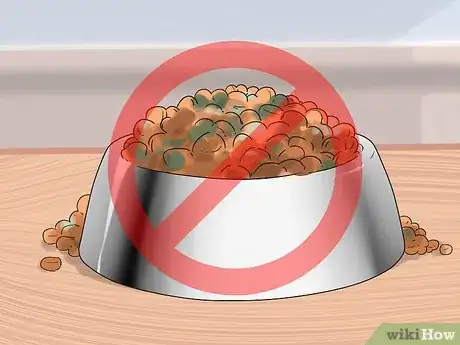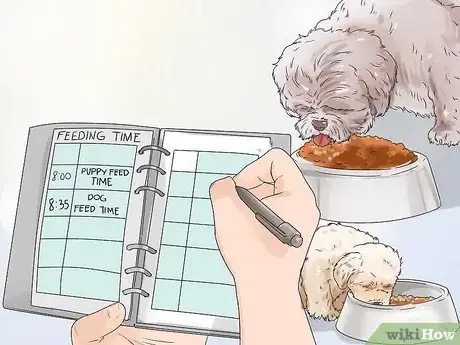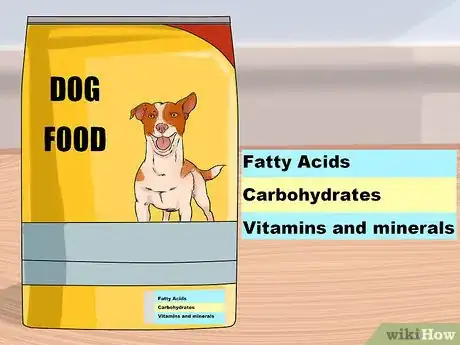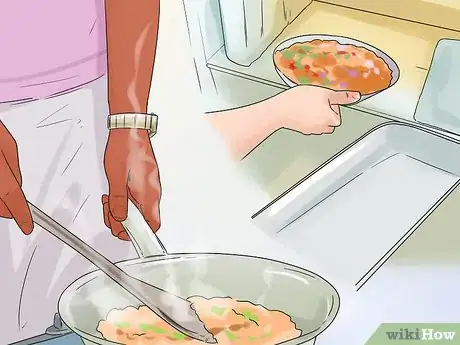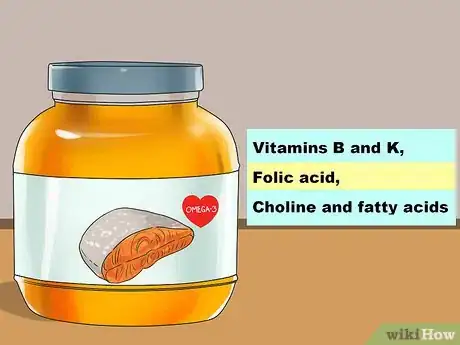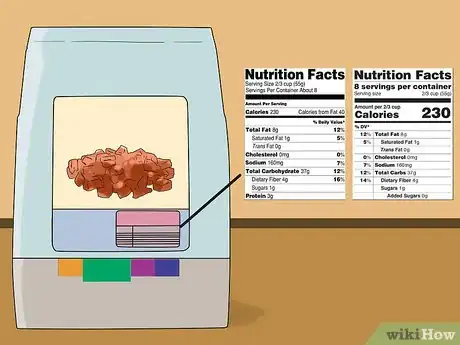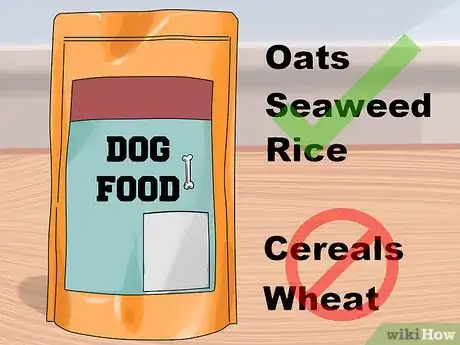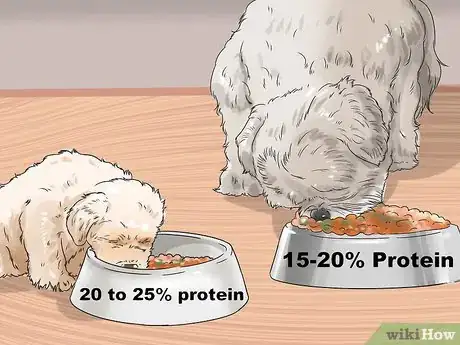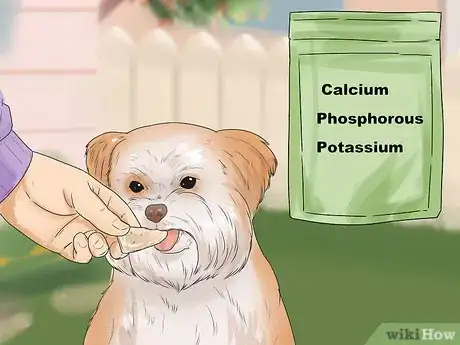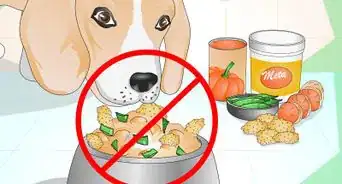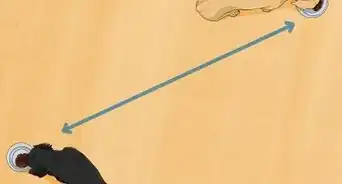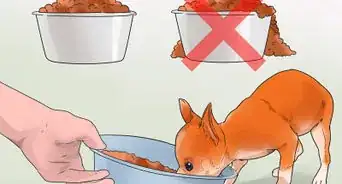This article was co-authored by Pippa Elliott, MRCVS. Dr. Elliott, BVMS, MRCVS is a veterinarian with over 30 years of experience in veterinary surgery and companion animal practice. She graduated from the University of Glasgow in 1987 with a degree in veterinary medicine and surgery. She has worked at the same animal clinic in her hometown for over 20 years.
This article has been viewed 66,716 times.
Feeding your new Shih Tzu can be simple, but it’s important to consider a number of important factors including the variety of food options, how much and when to feed your Shih Tzu, and whether to prepare your own pet food or purchase commercial brands for optimal nutrition. Regardless of what type of food you choose for your Shih Tzu, the most important thing is that your pup remains active and maintains a healthy weight.
Steps
Creating a Feeding Schedule
-
1Determine your Shih Tzu’s weight. It’s always best to have your veterinarian or groomer weigh the dog, since they have scales specifically created for this task. However, you can weigh your Shih Tzu at home with a method that is only slightly less accurate. Start by standing on a scale while holding your dog. Then, put the dog down, and weigh yourself again. The difference in these two weights should be your dog’s weight.[1]
-
2Feed your Shih Tzu the appropriate amount of food. This breed is prone to obesity, so it’s especially important to count calories. On average, older Shih Tzus and puppies need about 280 calories a day, adults need about 340 calories, and very active dogs need about 540 calories. You should be able to find the calorie information on the pet food bag. In most cases, this information is found either as part of the nutritional information or within the feeding guide. If you cannot find caloric information on the packaging, you may want to reconsider your choice of pet food, or contact the supplier directly.
- A good equation to determine how much to feed your specific Shih Tzu is 35 times each pound of body weight equals the total number of daily calories. For example, a 9-pound Shih Tzu would need to consume 315 calories a day: 9 X 35 = 315.
- Older dogs and puppies need to consume about 30 calories per pound of body weight. The same 9-pound Shih Tzu from the sample above would need 270 calories a day as a puppy and in their old age: 9 X 30 = 270.
- Use these calculations as a good starting point or guideline, but they may not be quite right for your dog. Each week feel for your dog's ribs — they should be easy to feel without applying pressure, but they also shouldn't be jutting out of their fur. If you can't find the ribs, then cut the amount of food by 10%.
- Dogs are considered senior after the age of seven, and should be considered puppies until they are one year old.[2]
Advertisement -
3Give your Shih Tzu food in the morning and evening. Some Shih Tzus will thrive with one large meal, but typically, splitting their daily calorie allotment between a morning and evening meal is preferred. This keeps your pup’s belly full and minimizes the amount of blood sugar peaks and valleys, offering more consistent energy levels.
- Until three months old, you can let puppies free feed. Provide them food equivalent to 30 calories per pound of weight, and let them graze throughout the day, unless they show signs of gorging. If your pup eats all of the food at once and is sick, you may need to split their meals up.
- Between three months and one year old, feed your Shih Tzu three times each day. After the pup reaches one year of age, you can begin feeding them one or two meals a day.[3]
-
4Avoid leaving large amounts of food out for your pet. This is called free feeding, and after your Shih Tzu reaches three months of age, this may encourage overeating. As a breed, Shih Tzus are prone to being overweight, so it’s especially important to avoid overfeeding. Instead, portion out their food to split calories into two smaller meals spaced throughout the meal.
-
5Adjust the feeding schedule for older or less active Shih Tzus. Once your pup reaches the age of seven it’s considered a senior. At this age, you’ll need to reduce their caloric intake. As they age, some dogs will not be able to eat very much at one time. Monitor their food consumption, and if you notice they just eat a few bites within 20 or 45 minutes, you can probably revert to free feeding.
- If you have a less active dog, you will need to reduce intake to 30 calories per pound, but you should continue to feed them at regular intervals to avoid weight gain.[4]
Making Your Shih Tzu’s Food
-
1Determine the nutrients necessary for optimal health. Your pup needs to consume a variety of foods to achieve the optimal levels of health and vitality. The American Association of Feed Control Officials (AAFO) sets appropriate nutritional minimums and maximums for each necessary nutrient, but basically, you should ensure your pet has appropriate levels of protein, fatty acids, and vitamins and minerals.
- Fatty acids are essential to ensure your dog has adequate energy. These can be derived from animal products; oils like cod liver, fish, and olive oil; and from seeds and nuts.
- Carbohydrates provide an easily burned energy source for your pup, and should comprise a significant portion of your dog’s daily intake, especially if you have a very active Shih Tzu.
- Vitamins and minerals are necessary in very small quantities, but you should make sure your Shih Tzu is receiving adequate levels of vitamins K and B, folic acid, and choline. Talk to your veterinarian to ensure you are including adequate sources of these vitamins or to get supplements to make up the difference.[5]
-
2Prepare and freeze homemade dog food to preserve it. There are numerous recipes available online free of charge as well as pet cookbooks and other resources available to help you make healthy foods for your Shih Tzu. Regardless of what recipe you choose, you may want to consider making large batches of one or two recipes and storing them in the freezer to extend the shelf life.
- Prepare a month or more worth of food with two recipes at a time, and stagger your Shih Tzu’s meals each week.[6]
-
3Include supplements in your Shih Tzu’s meal. The American Association of Feed Control Officials (AAFO) recommends supplements be used sparingly as a well-balanced diet already includes many of these key nutrients. However, if you’re preparing your own foods, you need to make sure your Shih Tzu has adequate levels of vitamins B and K, folic acid, choline, and fatty acids.
- Take into account those vitamins and minerals present in the meats, grains, and vegetables you use to make your dog’s food.
- Then, add in supplements as necessary to ensure your pup is receiving appropriate levels of each.
- Always consult your veterinarian before giving your Shih Tzu any supplements.[7]
Purchasing Healthy Food
-
1Read nutrition labels. The key information you're looking for is a label that lists a protein source derived from a quality source as the main ingredient. Quality is determined by sources of whole meat rather than meat by-products or plant-derived protein sources. Once you have determined the percentage of each key nutrient in your pet food (protein, fiber, fat, etc.), you should compare these to the standards set forth by the AAFO, American Society for the Prevention of Cruelty to Animals (ASPCA), and other organizations that assess the quality of foods.
- Check for labels that indicate the food has been certified by the AAFO.
- Make sure the pet food does not include large amounts of sodium, sugar, or chemicals. If you don't recognize the foods in the ingredient list, chances are the food is not of adequate nutritional quality.[8]
-
2Look for high-quality ingredients. The main difference between dog foods, besides price, is typically the quality of protein sources. You want to find ingredient lists that include whole meat sources. For other nutrient sources, avoid anything that uses modifiers in the description like derivatives, additives, or byproducts. For grains and other additions that provide carbohydrates, vitamins, and minerals, look for sources like oats, seaweed, and rice rather than cereals or wheat.[9]
-
3Ensure your Shih Tzu's food has adequate protein. This nutrient is essential in providing your dog with adequate energy and muscle and immune system sustaining amino acids. Puppies need foods that contain at least 20 to 25% protein, and adult dogs need between 15 and 20% protein foods. You should look for foods with high quality protein sources like chicken, beef, or fish.[10]
-
4Find foods with appropriate fat content. This is essential to ensuring your pup's ongoing health. While fat may sound unhealthy, it actually helps with the development of healthy brain tissue and provides an energy source for your pup. Puppies need between 5 and 10% crude fat in their diets, and adult Shih Tzus need foods that are about 5% fat. Fat can be derived from the meat source or from a supplement like fish oil.[11]
-
5Feed your Shih Tzu the right amounts of bone health nutrients. You'll need to ensure your pet receives calcium, phosphorous, and potassium from their foods. These nutrients aid in a number of health functions, but they are most essential in the development and maintenance of strong, healthy bones. These nutrients make up less than 5% of your pet's meals, but it's very important to make sure your pet food includes adequate amounts to meet your dog's needs. Typically, you'll need between half and one percent of each of these nutrients.[12]
References
- ↑ https://herepup.com/best-dog-food-for-shih-tzus/
- ↑ https://herepup.com/best-dog-food-for-shih-tzus/
- ↑ http://www.allshihtzu.com/shih-tzu-feeding
- ↑ http://www.allshihtzu.com/shih-tzu-feeding
- ↑ http://www.allshihtzu.com/shih-tzu-feeding
- ↑ https://pethelpful.com/dogs/Deliciouse-Dog-Food-Recipies
- ↑ http://talkspetfood.aafco.org/supplements
- ↑ http://www.vcahospitals.com/main/pet-health-information/article/animal-health/nutrition-general-feeding-guidelines-for-dogs/6491
- ↑ http://www.theshihtzuclub.co.uk/breed-resources/health/what-best-food
- ↑ http://www.vcahospitals.com/main/pet-health-information/article/animal-health/nutrition-general-feeding-guidelines-for-dogs/6491
- ↑ http://www.vcahospitals.com/main/pet-health-information/article/animal-health/nutrition-general-feeding-guidelines-for-dogs/6491
- ↑ http://www.vcahospitals.com/main/pet-health-information/article/animal-health/nutrition-general-feeding-guidelines-for-dogs/6491
About This Article
To feed your Shih Tzu, try to find food with whole meat ingredients, such as chicken, beef, or fish, which are higher quality protein sources. You should also look for food with 15 to 25 percent protein, or 20 to 25 percent protein for puppies, since this will provide your Shih Tzu with the energy and nutrients it needs. Once you've found a healthy dog food for your Shih Tzu, try to feed it once every morning and once every evening. Also, try to avoid leaving food out between meal times, since this can encourage overeating. For more tips from our Veterinary co-author, including how to prepare your own food for your Shih Tzu, read on!

